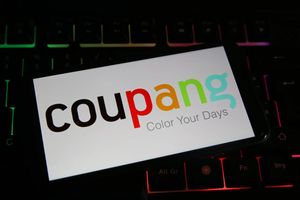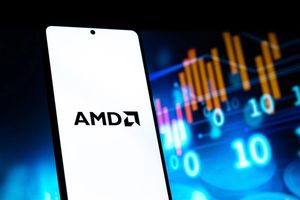
Samsung (KRX: 005930) has officially launched its highly anticipated Galaxy Z Fold 7, ushering in a new era of foldable smartphones with its remarkably slim and lightweight design, advanced display technology, and deeply integrated artificial intelligence capabilities. Debuting at a Galaxy Unpacked event in New York on July 9th and hitting shelves on July 25th, the Z Fold 7 has already garnered significant attention, with reports indicating it has broken pre-order records, firmly cementing Samsung's leadership in the burgeoning foldable market.
The Galaxy Z Fold 7 arrives boasting an even more refined form factor, featuring a wider 21:9 aspect ratio on its cover display and an expansive 8-inch main screen, both enhanced with Dynamic AMOLED 2x technology for vibrant visuals. Powering this innovative device is the custom-tuned Snapdragon 8 Elite for Galaxy processor, designed to accelerate on-device AI tasks, from generative photo edits to real-time multimodal AI interactions with Gemini Live. With its redesigned FlexHinge, robust camera system including a 200MP wide-angle lens, and One UI 8 optimized for foldable multitasking and AI, the Z Fold 7 positions Samsung not only as a pioneer in hardware but also as a frontrunner in intelligent mobile experiences. The device's immediate success and Samsung's already-revealed plans for future foldable innovations, including potential tri-fold designs and varied Z Fold 8 models, signal an aggressive strategy to maintain its dominance as competition, particularly from the anticipated entry of Apple (NASDAQ: AAPL), looms on the horizon.
The Z Fold 7's Debut: Design, Camera, and AI Innovations
The Samsung (KRX: 005930) Galaxy Z Fold 7 made its official debut on July 9, 2025, at the Galaxy Unpacked event held in Brooklyn, New York. This launch also introduced the Galaxy Z Flip 7, Galaxy Z Flip 7 FE, and the Galaxy Watch 8 series, with pre-orders opening on the same day and devices shipping from July 25, 2025. The Z Fold 7 launched with a starting price of $1,999 / £1,799 / AU$2,899 for the 256GB storage and 12GB RAM model, marking a $100 increase over its predecessor in the US market.
The Z Fold 7 is touted as Samsung's "thinnest, lightest and most advanced foldable yet," reflecting a significant focus on refining its physical form factor. When unfolded, the device measures 4.2mm thick, and 8.9mm when folded, making it 24 grams lighter than the Z Fold 6 at 215 grams. Both the main (now 8 inches) and cover (now 6.5 inches) screens have seen size increases, supporting a 120Hz refresh rate and a peak brightness of 2600 nits. Durability has also been a key focus, with enhanced Ultra-Thin Glass (UTG) designed to minimize the screen crease and an IP48 dust and water resistance rating. The device features a robust build with Gorilla Glass Victus Ceramic 2, Gorilla Glass Victus 2, and an Advanced Armor aluminum frame.
Camera upgrades are substantial, particularly for the main sensor. The primary wide-angle camera is a new 200MP f/1.7 sensor, a significant leap from the Z Fold 6's 50MP, reportedly the same as found in the Galaxy S25 Ultra. It is complemented by a 12MP f/2.2 ultrawide sensor with autofocus for macro shots and a 10MP f/2.4 telephoto lens offering 3x optical zoom. The 4MP under-display camera (UDC) on the inner screen has been replaced with a more traditional 10MP hole-punch sensor, suggesting improved selfie quality, while the outer selfie camera also features a 10MP sensor. The device supports 8K video recording at 30fps.
A central theme of the Z Fold 7's debut is its deep integration with "Galaxy AI," powered by the new One UI 8 (based on Android 16) and the latest Qualcomm (NASDAQ: QCOM) Snapdragon 8 Elite for Galaxy chipset. This processor, offering a 38% faster CPU compared to the Z Fold 6, enables multimodal AI with Google (NASDAQ: GOOGL) Gemini Live, allowing users to share screens with AI for contextual questions. AI is optimized for the large foldable screen, enhancing multitasking with features like Photo Assist for generative edits, Generative Edit with "Suggest Erases," and a new Audio Eraser tool. Purchasers also receive six months of free access to Google AI Pro, which includes Gemini 2.5 Pro and V3 Fast.
Leading up to this moment, Samsung (KRX: 005930) has been a pioneer in foldable technology since the initial Galaxy Fold launch in 2019. Rumors detailing the Z Fold 7's enhancements circulated widely in mid-2024, culminating in the official announcement following Samsung's typical late-summer Unpacked event schedule. Key players involved include Samsung Electronics, Qualcomm for its chipset, and Google for AI integration. Initial market reactions have been largely positive, praising the thinner design, larger displays, and significant camera and AI upgrades, with some calling it the "most no-compromise Galaxy Fold ever." However, concerns remain regarding the unchanged 4,400mAh battery capacity and the price increase.
The Shifting Sands: Winners and Losers in the Foldable Race
The launch of the Samsung (KRX: 005930) Galaxy Z Fold 7 has created discernible impacts across the smartphone industry, affecting competitors, suppliers, and various market players differently. While Samsung itself is a mixed winner, the device's advancements and strong initial sales, reportedly "more than doubling" Z Fold 6 figures, indicate a potential rebound in Q3 2025. The Z Fold 7's powerful processor, improved camera, thinner design, and enhanced AI capabilities are crucial for Samsung to maintain its premium segment position, though its overall foldable market share is still projected to decline from 45.2% in 2024 to 35.4% in 2025 due to fierce competition.
Qualcomm (NASDAQ: QCOM) emerges as a clear winner, as its Snapdragon 8 Elite for Galaxy mobile platform powers the Galaxy Z Fold 7 globally. This continued partnership solidifies Qualcomm's dominance in providing high-performance chipsets for premium Android devices, especially with the processor's touted "world's fastest mobile CPU" and advanced AI capabilities. Similarly, Samsung Display (KRX: 005930) directly benefits from producing the Z Fold 7's advanced foldable OLED panels. Advancements in Ultra-Thin Glass (UTG) technology, contributing to improved durability and a less prominent crease, reinforce Samsung Display's technological leadership. The success of the Z Fold 7 could boost demand, and Samsung Display is also exploring opportunities to supply panels to other device manufacturers, including a rumored deal for Apple's (NASDAQ: AAPL) OLED MacBooks by 2026.
Software developers specializing in AI and foldable optimization also stand to gain. The integration of advanced AI features in One UI 8 and native Google (NASDAQ: GOOGL) AI services like Circle to Search and Gemini Live, optimized for the Z Fold 7's expansive screen, creates new avenues for innovative applications. Telecommunication companies/carries also benefit from strong sales, leading to increased subscriptions and data plan sales, particularly in markets with strong Samsung presence.
On the other side, competitors in the "Fold" segment outside China face significant pressure. Huawei (SHE: 002502) held the top spot in the foldable market with a 45% share in Q2 2025, driven by strong domestic demand in China and aggressive pricing, with its new tri-fold Mate XT Master noted for its thinner design. Motorola (NYSE: MSI) surged to second place globally with a 28% market share in Q2 2025, surpassing Samsung, largely due to its more affordable Razr 60 series. Other Chinese brands like Honor (SHE: 002502), Xiaomi (HKG: 1810), Tecno, and Vivo (HKG: 00683) are aggressively expanding, with Chinese companies collectively exceeding 70% market share in Q2 2025. Even Google (NASDAQ: GOOGL), with its Pixel Fold series, might struggle to compete directly with the Z Fold 7's processing power in raw gaming performance.
Older Samsung (KRX: 005930) foldable models, such as the Galaxy Z Fold 6, inevitably suffer from sales cannibalization. The Z Fold 7's superior specs and AI features position it as a "must-have upgrade," making predecessors less appealing. Some hinge suppliers may also face increased competition and cost pressure, as Samsung actively seeks to diversify its supplier base to cut costs, creating intense competition among companies like KH Vatec, S-Connect, AU Flex, and Fine M-Tec. In the long term, manufacturers of traditional premium smartphones could see a gradual decline as foldable technology matures and becomes more affordable, posing a threat to the "slab" smartphone market. Finally, Apple (NASDAQ: AAPL), while a future entrant expected in late 2026, will face a highly competitive market where Samsung and Chinese brands have already established significant leads in product iteration and supply chain optimization.
Redefining Mobile: Industry Impact and Broader Implications
The debut of the Samsung (KRX: 005930) Galaxy Z Fold 7 is not merely a product launch but a pivotal event that underscores the maturation of the foldable smartphone industry, reflecting and influencing several key trends. The foldable market is projected to reach an estimated USD 31.30 billion in 2025 and an impressive USD 118.87 billion by 2030, with foldables anticipated to constitute 5.9% of all global smartphone sales by 2025. This indicates a clear shift from a niche product to a more mainstream upgrade path.
Key trends exemplified by the Z Fold 7 include enhanced durability and design innovation, with its thinner (8.9mm folded, 4.2mm unfolded) and lighter form factor, improved Ultra-Thin Glass (UTG), and an IP48 water and dust resistance rating. The wider 21:9 aspect ratio of the 6.5-inch outer display and an 8-inch main display significantly improve usability for typing, app interaction, and multitasking. The deep integration of "Galaxy AI" and AI-powered editing tools like Photo Assist and Generative Edit also aligns with the broader industry's focus on artificial intelligence in mobile devices. Foldable phones like the Z Fold 7 offer enhanced screen space and improved multitasking, aiming to merge tablet-like functionality with smartphone convenience. While the Z Fold 7 launched with a slight price increase, the long-term trend expects increasing competition to drive prices down.
The launch of the Z Fold 7 intensifies the already competitive foldable market. Samsung aims to maintain its leadership through continuous innovation in design, camera technology (featuring a 200MP main camera), and AI. However, its market share is under pressure, with global share projected to drop from 45.2% in 2024 to 35.4% in 2025 due to aggressive competition from Chinese OEMs like Huawei (SHE: 002502), Honor (SHE: 002502), Motorola (NYSE: MSI), Xiaomi (HKG: 1810), OPPO, and Vivo (HKG: 00683). These brands are rapidly gaining traction with competitive pricing and diverse form factors, particularly in the Chinese market. Google (NASDAQ: GOOGL) Pixel Fold has also emerged as a strong contender, growing its presence in the European foldable market. Apple's (NASDAQ: AAPL) rumored entry around 2026 is a significant factor driving innovation, with Samsung proactively developing diversified offerings, including a potentially wider Z Fold variant and a tri-fold device.
Partners such as display manufacturers like Samsung Display (KRX: 005930) and chipset providers like Qualcomm (NASDAQ: QCOM) remain crucial, supplying advanced flexible OLED technologies and high-performance mobile chipsets, respectively. The accessory market and software developers also see new opportunities to create specialized products and adapt applications for the unique form factors of foldables.
As the foldable market matures, regulatory and policy implications may arise, including increased scrutiny on sustainability and environmental impact due to the complex materials and manufacturing processes. Data privacy and security will continue to be governed by existing and evolving regulations. Trade and tariffs could influence competitive dynamics, and while Samsung initially held a near-monopoly in some foldable markets, the rapid entry of competitors has significantly diversified the landscape, reducing anti-trust concerns.
Historically, the emergence of foldable smartphones, spearheaded by devices like the Z Fold 7, can be compared to transformative periods in mobile phone history. It represents the most significant departure from the dominant slate-like touchscreen design in over a decade, aiming to redefine what a phone can be by merging phone and tablet functionalities. Like early smartphones, foldables are transitioning from a perceived "gimmick" to a "core innovation" as durability improves, costs decrease, and practical use cases become clearer. The Z Fold 7, with its refined design and advanced features, aims to solidify this transition, pushing foldables further into mainstream acceptance.
The Road Ahead: What Comes Next
The foldable smartphone market, significantly influenced by the Samsung (KRX: 005930) Galaxy Z Fold 7's debut, is poised for accelerated growth and transformation. In the short-term (1-2 years), the market will witness intensified competition and diversification, with more brands launching foldables across a wider range of designs and price points. While foldables remain premium, increasing competition and manufacturing improvements are expected to drive average selling prices down. Continued enhancements in durability, hinge technology, and display resilience will make devices thinner, lighter, and more robust, with the Z Fold 7's 500,000-fold durability setting a new benchmark. Software optimization for foldable screens will be crucial, along with the emergence of new form factors like "tri-fold" devices, which Samsung is reportedly planning for late 2025, possibly alongside Huawei's (SHE: 002502) Mate XT Ultimate. A major turning point is anticipated in 2026 with Apple's (NASDAQ: AAPL) rumored entry, expected to significantly boost consumer interest and reshape market dynamics.
Long-term possibilities (3-5+ years) point towards mainstream adoption, with foldable smartphone shipments projected to reach 48.1 million units by 2027, potentially accounting for 5% or more of the total smartphone market. The market size is projected to grow from $29.6 billion in 2025 to $75.1 billion by 2033. Beyond folding, the industry could explore advanced display technologies like rollable and stretchable displays, and self-healing materials. AI integration will deepen, with foldables uniquely suited for AI-driven features due to their larger screens, leading to more AI-tailored adaptive user interfaces. Foldables could increasingly blur the lines between phones, tablets, and even laptops, serving as versatile all-in-one devices, with Samsung exploring "wide-type" foldables by 2026. Sustainable and modular designs could also emerge, allowing for component upgrades.
Strategic pivots will be essential. Samsung must continue rapid innovation in design, durability, and software optimization, expanding its foldable portfolio with diverse form factors to address varied consumer needs and fend off rivals. Competitors like Huawei (SHE: 002502), Motorola (NYSE: MSI), and Google (NASDAQ: GOOGL) will need to differentiate through aggressive pricing, unique form factors, or specific feature sets. Software developers must invest in training for adaptive UI/UX design and multi-window optimization. Component suppliers need to scale production of flexible OLED displays, Ultra-Thin Glass (UTG), and advanced hinge mechanisms to meet demand and reduce costs.
Market opportunities include attracting new user segments beyond early adopters, particularly for enterprise and professional use due to their versatility. Content creation and gaming will benefit from larger, immersive displays. Emerging markets, especially Asia-Pacific and MEA, are projected for significant growth. Challenges persist, primarily the high cost, lingering consumer skepticism about durability, and the need for robust software optimization and ecosystem growth. Convincing mainstream users of the value proposition remains crucial, alongside managing supply chain complexities.
In scenarios, rapid growth and mainstream adoption (the most likely) could see foldables capturing a significant market share by 2027, driven by Apple's entry and continuous innovation. Alternatively, slower growth could occur if cost and durability concerns persist. Market fragmentation and specialization are also likely, with different foldable types catering to specific user needs. The future is one of accelerated innovation and heightened competition, with the Z Fold 7 setting a high bar and new form factors redefining the concept of a smartphone.
The Foldable Frontier: A Concluding Assessment
The debut of the Samsung (KRX: 005930) Galaxy Z Fold 7 marks another significant stride in the evolution of foldable smartphones, reinforcing Samsung's commitment to innovation and its dominant position in this nascent yet rapidly growing segment. This launch is perceived not merely as an incremental update but as a pivotal moment, showcasing advancements crucial for driving broader mainstream adoption. The Z Fold 7 highlights enhanced durability, a thinner and lighter design, substantial camera upgrades with a 200MP main sensor, and deep integration of "Galaxy AI" features like Gemini Live and advanced photo editing tools. These improvements are designed to address long-standing consumer concerns and propel foldables further into the mainstream.
Moving forward, the market is poised for accelerated growth, transitioning from a niche luxury item to a more viable option for power users and tech enthusiasts. The Z Fold 7's improvements will likely set a new benchmark for competitors, intensifying the already fierce competition from Chinese manufacturers like Huawei (SHE: 002502), Honor (SHE: 002502), and Xiaomi (HKG: 1810), as well as Google (NASDAQ: GOOGL). This competitive landscape will foster further innovation in display technology, hinge design, and software optimization, driving a more dynamic ecosystem. We can expect increased investment in app optimization for foldable form factors, crucial for enhancing user experience and platform value.
The lasting impact of the Samsung (KRX: 005930) Galaxy Z Fold 7 stems from its ability to further normalize the foldable form factor, proving that these devices can be durable, powerful, and increasingly practical for daily use. It reinforces the idea that innovation in smartphone design is not stagnant, driving excitement and pushing boundaries beyond the traditional slab phone. This device will continue to shape consumer expectations for what a premium smartphone can be, influencing design language and technological priorities across the industry for years to come. It demonstrates Samsung's strategic foresight in investing heavily in a category that holds immense potential for future growth and differentiation, potentially redefining mobile computing.
For investors, the post-debut period for the Galaxy Z Fold 7 is crucial. Key indicators to watch in the coming months include initial sales figures and pre-order performance, which will signal robust consumer demand and confidence. Investors should monitor if the Z Fold 7 helps Samsung maintain or expand its market share against growing competition, especially considering the anticipated entry of Apple (NASDAQ: AAPL) in 2026. Maintaining healthy profit margins on a complex device like a foldable is key, so any adjustments to pricing strategy and their impact on profitability will be vital. Additionally, supply chain efficiency, competitor responses, the growth of the software ecosystem for foldables, and real-world durability reports and customer feedback will all be crucial factors in assessing the Z Fold 7's commercial success and its contribution to Samsung's overall financial health and strategic direction in the evolving smartphone market.





